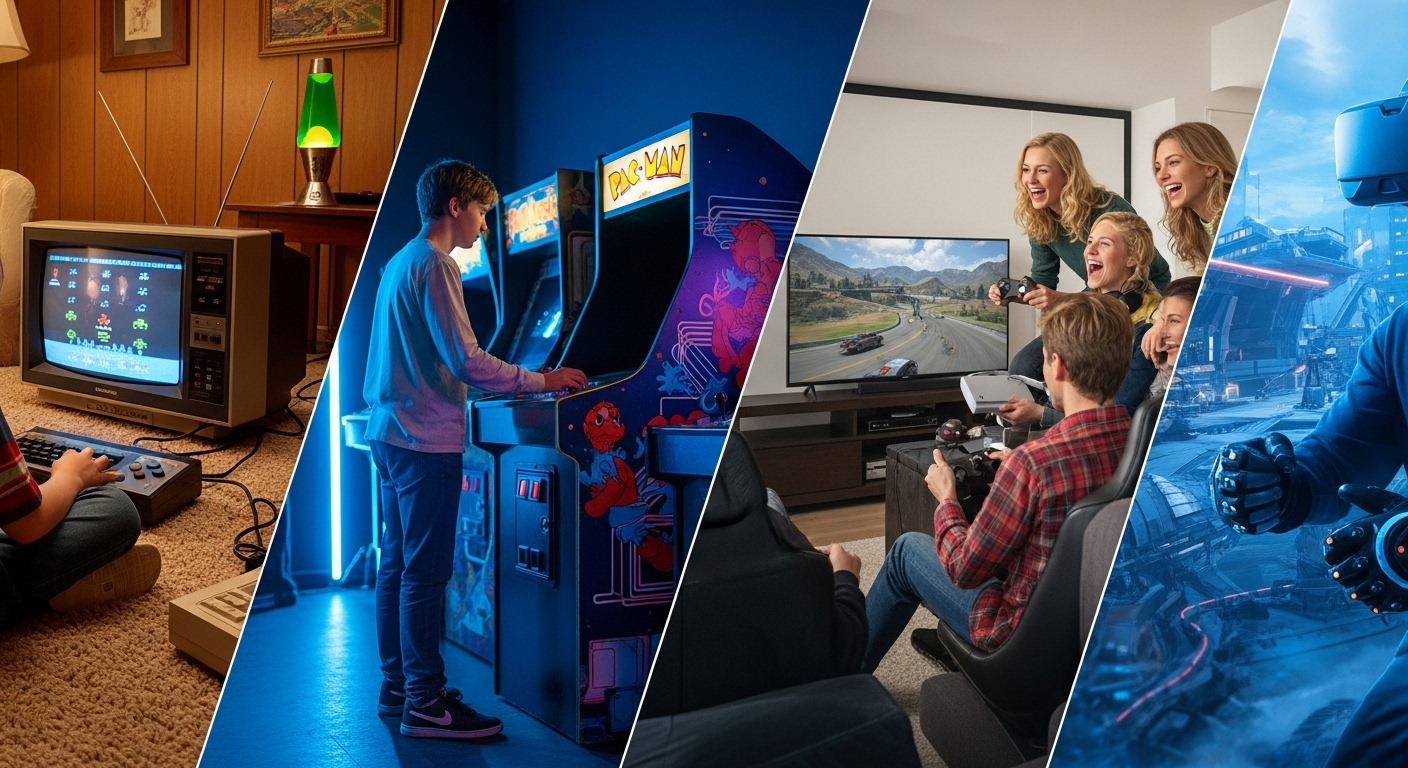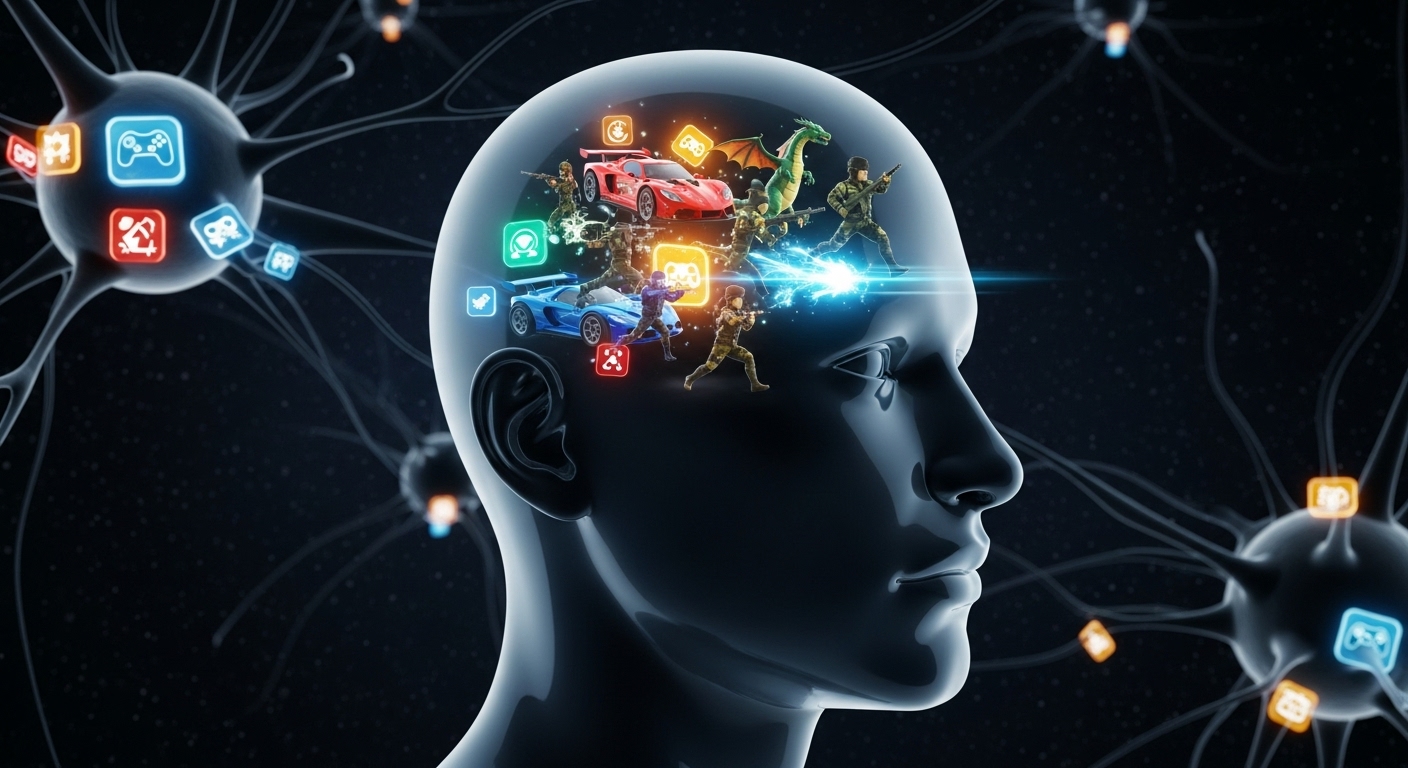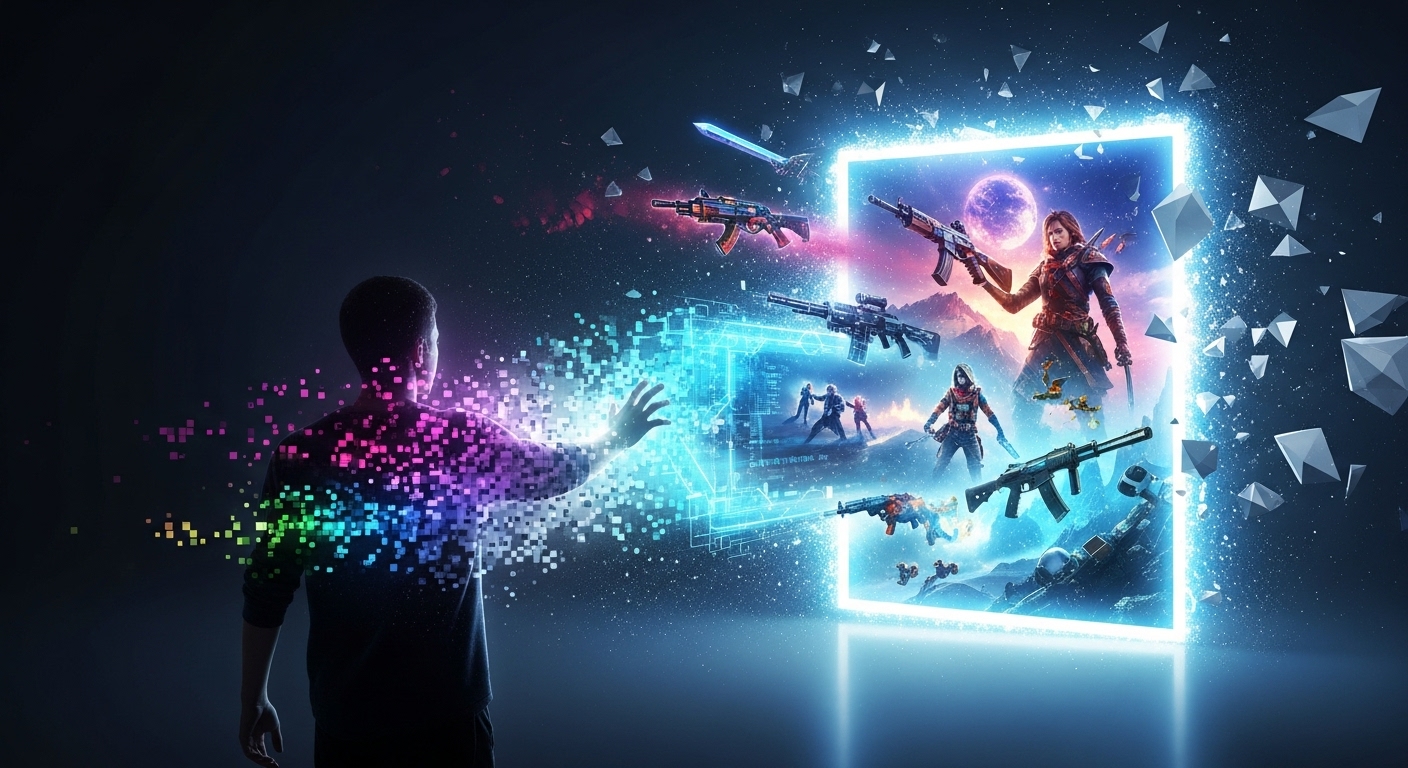Gaming has transformed from a simple pastime into one of the most influential cultural and technological forces of the modern era. What began as a few blinking pixels on a screen has become a multibillion-dollar global industry, blending art, science, storytelling, and human connection. The evolution of gaming mirrors the evolution of technology itself — a journey of imagination, competition, and endless innovation.
In this exploration, we will dive into the fascinating world of gaming — its history, development, psychology, and social impact — and understand how it continues to redefine entertainment and human creativity in the 21st century.
The Birth of Gaming: Humble Beginnings
The roots of gaming stretch back to the early days of computing in the 1950s and 1960s. Back then, computers filled entire rooms and were used almost exclusively for research and mathematics. But even in these sterile environments, curiosity and creativity sparked experiments that would shape the future.
One of the earliest known digital games was “Tennis for Two,” created in 1958 by physicist William Higinbotham. It displayed a simple tennis match on an oscilloscope screen — primitive by today’s standards but revolutionary at the time. A few years later, “Spacewar!” emerged from MIT, where students used a PDP-1 computer to simulate a space battle.
The true explosion came in the 1970s with the birth of the arcade era. Titles like Pong, Space Invaders, and Pac-Man turned gaming into a public phenomenon. Players flocked to arcades, coins in hand, to challenge friends and chase high scores. These early games were simple but addictive, offering something new — interactive entertainment that demanded skill, reflexes, and perseverance.
The Rise of Home Consoles
As the popularity of arcades grew, companies sought to bring gaming into the home. The first major success was the Atari 2600 in 1977. With interchangeable cartridges, it offered players a variety of games without needing to buy a new system each time. Suddenly, gaming was no longer confined to dimly lit arcades — it was part of everyday life.
The 1980s witnessed an explosion of creativity and competition. Nintendo entered the scene with the Nintendo Entertainment System (NES), revitalizing the market after the crash of 1983. The NES introduced legendary franchises like Super Mario Bros., The Legend of Zelda, and Metroid, setting new standards for storytelling and gameplay.
Sega followed closely with its Master System and later the Genesis, sparking the first true console wars. Marketing battles like “Genesis does what Nintendon’t” became part of pop culture, and the rivalry pushed innovation forward.
The Golden Age of 3D Gaming
The 1990s marked a turning point — the era when gaming transitioned from 2D sprites to fully realized 3D worlds. This transformation reshaped how players experienced virtual environments. The Sony PlayStation, launched in 1994, became a global success and introduced cinematic storytelling to gaming. Titles like Final Fantasy VII, Metal Gear Solid, and Resident Evil proved that games could deliver emotional depth and complex narratives.
Nintendo, always the innovator, brought us the Nintendo 64, where Super Mario 64 redefined what a 3D platformer could be. It gave players unprecedented freedom of movement and exploration. Meanwhile, PC gaming gained momentum with hits like Doom, Quake, and StarCraft, fueling the birth of competitive multiplayer and online gaming.
The late 1990s and early 2000s became a golden age — a time when creativity, technology, and storytelling converged in ways never seen before. Developers began experimenting with realistic physics, expansive open worlds, and branching narratives, setting the stage for modern gaming.
Online Gaming and the Dawn of Connectivity
When the internet entered the mainstream, gaming changed forever. Multiplayer experiences that were once limited to split screens and LAN parties now spanned continents. The late 1990s saw the rise of online platforms such as Battle.net, which connected players in Diablo and StarCraft.
By the early 2000s, consoles joined the online revolution. The Xbox Live service allowed players to compete and chat with others around the globe. Online gaming became a social activity — a place to meet new people, build friendships, and form communities.
Massively multiplayer online role-playing games (MMORPGs) like World of Warcraft redefined what it meant to play together. Millions of players inhabited shared virtual worlds, forming guilds, embarking on quests, and even holding in-game weddings and ceremonies. Gaming was no longer just about winning or losing — it became about belonging.
The Era of High Definition and Realism
As hardware evolved, so did the ambition of game developers. The mid-2000s ushered in the age of high-definition gaming with the Xbox 360, PlayStation 3, and powerful gaming PCs. This was the time when graphics began to blur the line between reality and fiction.
Games like Assassin’s Creed, Gears of War, and Uncharted pushed technical limits with lifelike animations, voice acting, and cinematic camera work. Real-time physics and motion capture brought authenticity to virtual worlds. For many players, games became interactive movies — immersive experiences that drew them in emotionally and visually.
At the same time, indie developers began to rise. With the advent of digital distribution platforms, smaller teams could create and publish their own games. Titles like Braid, Limbo, and Journey demonstrated that innovation and emotional storytelling didn’t require massive budgets. The diversity of gaming experiences expanded dramatically, offering something for everyone.
Mobile Gaming: The New Frontier
The late 2000s introduced a new player in the gaming landscape — the smartphone. When Apple launched the App Store in 2008, it opened the floodgates for mobile games that could reach millions instantly.
Simple yet addictive titles like Angry Birds, Temple Run, and Candy Crush Saga transformed casual gaming into a global phenomenon. Suddenly, gaming wasn’t just for enthusiasts or console owners. Anyone with a phone could play.
Mobile gaming democratized the medium, but it also shifted business models. Free-to-play games, supported by microtransactions and ads, became dominant. While some criticized this model for encouraging excessive spending, it also allowed developers to sustain games over years with continuous updates and community engagement.
The Social and Psychological Impact of Gaming
Gaming is not just entertainment — it’s an emotional and social experience. Modern studies have shown that gaming can enhance problem-solving skills, creativity, and teamwork. Cooperative games foster collaboration and communication, while competitive ones sharpen focus and strategy.
Beyond skill development, gaming has become a therapeutic tool. Titles designed to promote mindfulness, relaxation, and social connection have helped people cope with anxiety and loneliness. For many, online communities provide a sense of belonging that transcends geographical boundaries.
However, like all forms of media, gaming also faces scrutiny. Concerns about addiction, excessive screen time, and violent content have persisted. But the conversation has matured. Researchers now focus on balance — understanding how to harness the benefits of gaming while minimizing risks.
Esports: The New Age of Competition
Once seen as a niche hobby, gaming has evolved into a legitimate competitive sport. Esports tournaments fill arenas, attract millions of viewers online, and offer prize pools rivaling traditional sports.
Games like League of Legends, Counter-Strike, Dota 2, and Fortnite have turned skilled players into celebrities. Esports organizations operate like professional sports teams, complete with coaches, analysts, and sponsors.
The appeal lies not only in the competition but in the culture that surrounds it. Fans follow their favorite teams, discuss strategies, and celebrate victories much like football or basketball enthusiasts. Streaming platforms have made this possible, creating an ecosystem where players, creators, and audiences coexist in real time.
Virtual Reality and the Future of Immersion
Virtual reality (VR) represents the next great leap in gaming. With headsets like the Oculus Quest, PlayStation VR, and HTC Vive, players can step directly into the game world — not just watch it on a screen.
VR gaming offers experiences that are deeply immersive and physical. Whether exploring alien worlds, solving puzzles, or engaging in combat, players feel as though they are truly inside the environment. This level of immersion has also opened doors to new forms of education, therapy, and art.
Alongside VR, augmented reality (AR) has gained traction through games like Pokémon GO, which blend digital elements with the real world. These technologies hint at a future where gaming and reality may merge seamlessly.
The Role of Storytelling in Modern Games
As technology advanced, storytelling became one of gaming’s greatest strengths. Today, games rival movies and novels in their ability to evoke emotion, provoke thought, and explore moral complexity.
Narrative-driven titles like The Last of Us, Red Dead Redemption 2, and God of War show that games can tell profound human stories. Players don’t just observe; they participate, making choices that shape outcomes. This interactivity makes storytelling in games uniquely personal.
Moreover, diverse voices are reshaping narratives. Indie developers and smaller studios bring stories from different cultures, perspectives, and experiences, enriching the medium with authenticity and depth. Gaming has become a global language — one that transcends borders and speaks through emotion and experience.
The Community and Culture of Gaming
Gaming is no longer confined to consoles or PCs — it’s a cultural phenomenon. From fan conventions and cosplay to streaming and content creation, gaming has spawned entire industries within itself. Platforms dedicated to live streaming and video sharing have turned gamers into entertainers, educators, and influencers.
Communities form around shared interests, favorite franchises, and collective creativity. Modding — the practice of modifying games — has allowed players to extend the life of their favorite titles, creating new levels, characters, and even entire worlds.
Yet the gaming community also reflects the complexities of the online world. Issues of inclusivity, representation, and toxicity have prompted deep discussions about how to make gaming spaces safer and more welcoming. As the medium matures, so too does its culture, striving toward greater diversity and understanding.
The Economics of Gaming
Behind the creativity and culture lies a powerful economic engine. The gaming industry now surpasses film and music combined in annual revenue. From blockbuster console releases to mobile hits and online subscriptions, gaming fuels a vast global economy.
Major publishers invest millions into development, while independent creators rely on crowdfunding and digital distribution to reach audiences. New technologies like cloud gaming promise to further reshape how games are distributed and played, removing the need for powerful hardware.
Monetization models continue to evolve. Subscription services offer vast libraries of games for a monthly fee, while live-service titles rely on regular content updates to keep players engaged. The financial ecosystem of gaming is complex, but it also reflects the medium’s adaptability and innovation.
Gaming as an Art Form
For decades, critics debated whether games could be considered art. That debate has long been settled. Games combine visual design, music, narrative, and interactivity in ways that engage players emotionally and intellectually.
Artistic masterpieces such as Shadow of the Colossus, Journey, and Gris prove that games can evoke awe, sadness, and introspection. The interactive nature of gaming transforms audiences from passive observers into active participants — a defining feature that sets it apart from other art forms.
As technology evolves, so does artistic expression within games. Developers now experiment with abstract design, moral storytelling, and player-driven creativity, expanding the boundaries of what gaming can be.
The Future of Gaming
Where will gaming go next? The possibilities are endless. Advances in artificial intelligence promise smarter, more responsive worlds. Cloud computing could make high-end gaming accessible to anyone with an internet connection.
Cross-platform play is breaking down walls between systems, allowing players on different devices to share the same experience. Meanwhile, user-generated content and modding communities continue to democratize creativity.
As society becomes more digital, gaming may play an even greater role in education, socialization, and innovation. It will not just entertain but inspire — teaching empathy, problem-solving, and collaboration on a global scale.
Conclusion: More Than Just a Game
Gaming has grown far beyond its origins as a novelty or a diversion. It is a cultural force that unites generations, bridges languages, and reflects the endless creativity of humanity.
From the blinking pixels of the 1970s to the photorealistic worlds of today, gaming has become a mirror of our imagination — a space where technology meets art, competition meets connection, and fantasy meets reality.
At its heart, gaming is about stories — not just the ones told on screen, but the ones lived by players. Every quest completed, every battle won, and every friendship formed in a virtual world adds to the tapestry of shared human experience.
The evolution of gaming continues, and its story is far from over. In the years to come, new technologies will emerge, new worlds will be built, and millions more will discover the joy of play. For as long as people dream, explore, and connect, gaming will remain one of the purest expressions of what it means to be human.



